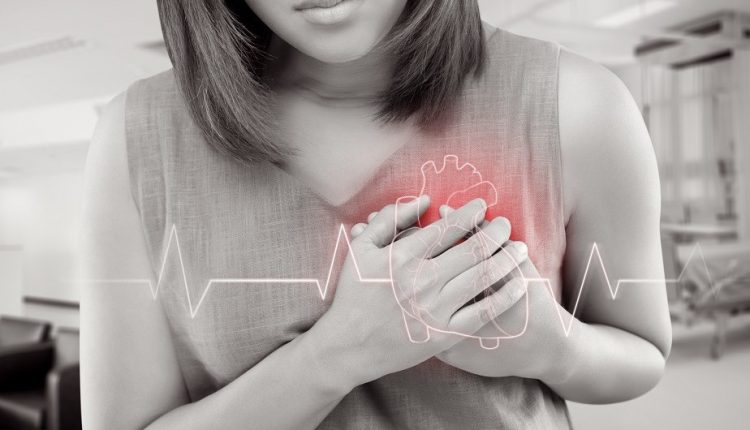
Symptoms of heart disease in women: what they are
Heart disease in men and women: yes, there are differences. And knowing about them is essential for preventing and treating them
When it comes to heart disease, there are often significant differences between the sexes in terms of presenting symptoms and even some risk factors.
Five of the most frequently asked questions are variations of the following.
Do men and women manifest signs of heart disease differently?
Most adults are familiar with the classic image of a patient clutching their chest due to the pressure associated with a heart attack, but many are unaware that atypical symptoms of heart problems are just as common, especially in women.
In fact, atypical symptoms such as nausea, indigestion, shortness of breath, elbow or jaw discomfort can be symptoms of coronary artery disease in women.
Healthcare professionals must be alert to the wide variety of manifestations and their relation to gender.
FIRST AID: VISIT THE DMC DINAS MEDICAL CONSULTANTS BOOTH AT EMERGENCY EXPO
What are the risk factors for heart disease in women?
They are tobacco use, hypertension, diabetes, obesity, family history of premature coronary artery disease and lipid disorders.
Interestingly, high triglyceride levels are a predictor of coronary heart disease risk in women, but not in men.
Is there a particular symptom that women should pay more attention to?
There is no particular symptom to which women should pay more attention than another, but an unusual development of chest discomfort, indigestion, breathing problems or pain in the jaw or arm should warrant a discussion with the doctor.
DEFIBRILLATORS: VISIT THE MEDICAL EQUIPMENT SOLUTIONS PROGETTI BOOTH AT EMERGENCY EXPO
What are the most important things women can do to prevent heart disease?
- Don’t smoke.
- Manage your weight to reduce the risk of diabetes.
- Exercise regularly.
- Control blood pressure.
WOULD YOU LIKE TO MEET RADIOEMS? VISIT THE RADIOEMS RESCUE BOOTH AT EMERGENCY EXPO
Why does breast cancer receive more attention than heart disease in women?
Breast cancer receives more attention because it is more likely to impact the lives of younger women than coronary heart disease.
On average, coronary heart disease occurs about 10 years later in women than in men.
Many of the heart attacks in women with coronary artery disease occur between the ages of 70 and 80.
Read Also
Emergency Live Even More…Live: Download The New Free App Of Your Newspaper For IOS And Android
Heart Attack, Some Information For Citizens: What Is The Difference With Cardiac Arrest?
Heart Attack, Prediction And Prevention Thanks To Retinal Vessels And Artificial Intelligence
Full Dynamic Electrocardiogram According To Holter: What Is It?
In-Depth Analysis Of The Heart: Cardiac Magnetic Resonance Imaging (CARDIO – MRI)
Heart Attack Symptoms: What To Do In An Emergency, The Role Of CPR
Heart Attack: Guidelines For Recognising Symptoms
Chest Pain, Emergency Patient Management
Notions Of First Aid, The 5 Warning Signs Of A Heart Attack
Notions Of First Aid: The 3 Symptoms Of A Pulmonary Embolism
Holter Monitor: How Does It Work And When Is It Needed?
What Is Patient Pressure Management? An Overview
Head Up Tilt Test, How The Test That Investigates The Causes Of Vagal Syncope Works
Cardiac Syncope: What It Is, How It Is Diagnosed And Who It Affects
Holter Blood Pressure: What Is The ABPM (Ambulatory Blood Pressure Monitoring) For?
Sinus Tachycardia: What It Is And How To Treat It
Head Up Tilt Test, How The Test That Investigates The Causes Of Vagal Syncope Works
Aslanger Pattern: Another OMI?
Abdominal Aortic Aneurysm: Epidemiology And Diagnosis
What Is The Difference Between Pacemaker And Subcutaneous Defibrillator?
Heart Disease: What Is Cardiomyopathy?
Inflammations Of The Heart: Myocarditis, Infective Endocarditis And Pericarditis
Heart Murmurs: What It Is And When To Be Concerned
Clinical Review: Acute Respiratory Distress Syndrome
Cardiac Holter, The Characteristics Of The 24-Hour Electrocardiogram
Botallo’s Ductus Arteriosus: Interventional Therapy
Heart Valve Diseases: An Overview
Cardiomyopathies: Types, Diagnosis And Treatment
First Aid And Emergency Interventions: Syncope
Tilt Test: What Does This Test Consist Of?
Cardiac Syncope: What It Is, How It Is Diagnosed And Who It Affects
New Epilepsy Warning Device Could Save Thousands Of Lives
Understanding Seizures And Epilepsy
First Aid And Epilepsy: How To Recognise A Seizure And Help A Patient
Neurology, Difference Between Epilepsy And Syncope
Positive And Negative Lasègue Sign In Semeiotics
Wasserman’s Sign (Inverse Lasègue) Positive In Semeiotics
Positive And Negative Kernig’s Sign: Semeiotics In Meningitis
Lithotomy Position: What It Is, When It Is Used And What Advantages It Brings To Patient Care
Trendelenburg (Anti-Shock) Position: What It Is And When It Is Recommended
Prone, Supine, Lateral Decubitus: Meaning, Position And Injuries
Stretchers In The UK: Which Are The Most Used?
Does The Recovery Position In First Aid Actually Work?
Reverse Trendelenburg Position: What It Is And When It Is Recommended
Drug Therapy For Typical Arrhythmias In Emergency Patients
Canadian Syncope Risk Score – In Case Of Syncope, Patients Are Really In Danger Or Not?
What Is Ischaemic Heart Disease And Possible Treatments
Percutaneous Transluminal Coronary Angioplasty (PTCA): What Is It?
Ischaemic Heart Disease: What Is It?
EMS: Pediatric SVT (Supraventricular Tachycardia) Vs Sinus Tachycardia
Paediatric Toxicological Emergencies: Medical Intervention In Cases Of Paediatric Poisoning
Valvulopathies: Examining Heart Valve Problems



